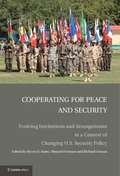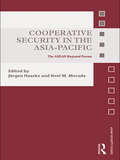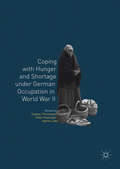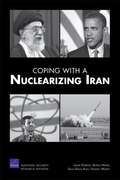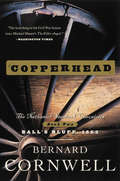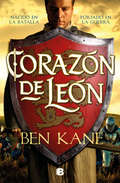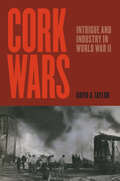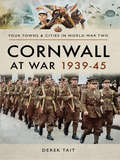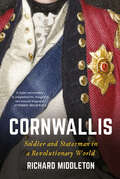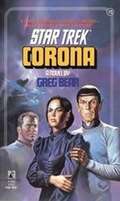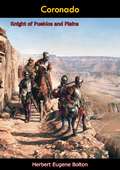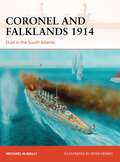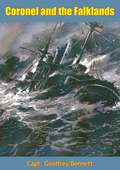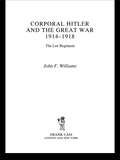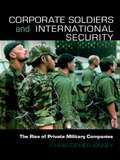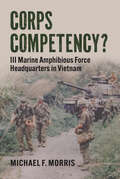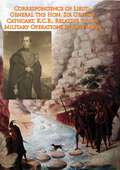- Table View
- List View
Cooperating for Peace and Security: Evolving Institutions and Arrangements in a Context of Changing U. S. Security Policy
by Bruce D. Jones Shepard Forman Richard GowanCooperating for Peace and Security is a comprehensive survey of multilateral security cooperation since 1989. With essays by leading experts on topics from peacekeeping to nuclear security, it goes beyond theoretical discussions of the value of cooperation to show how the operational activities of international organizations meet the security needs of states. In particular, it explores the complex relationship between multilateralism and American security concerns. Covering the UN, NATO, and regional organizations, the authors show that U.S. interests have often shaped institutions. But, more strikingly, other states have also driven institutional change without U.S. support or even in the face of American opposition. This raises important questions about how the balance of power shapes international institutions. In a period of shifting power dynamics, the empirical evidence on security cooperation gathered in this volume is a unique resource for scholars and policy-makers concerned with the future of international institutions.
Cooperation under Fire: Anglo-German Restraint during World War II (Cornell Studies in Security Affairs)
by Jeffrey W. LegroWhy do nations cooperate even as they try to destroy each other? Jeffrey Legro explores this question in the context of World War II, the "total" war that in fact wasn't. During the war, combatant states attempted to sustain agreements limiting the use of three forms of combat considered barbarous—submarine attacks against civilian ships, strategic bombing of civilian targets, and chemical warfare. Looking at how these restraints worked or failed to work between such fierce enemies as Hitler's Third Reich and Churchill's Britain, Legro offers a new understanding of the dynamics of World War II and the sources of international cooperation.While traditional explanations of cooperation focus on the relations between actors, Cooperation under Fire examines what warring nations seek and why they seek it—the "preference formation" that undergirds international interaction. Scholars and statesmen debate whether it is the balance of power or the influence of international norms that most directly shapes foreign policy goals. Critically assessing both explanations, Legro argues that it was, rather, the organizational cultures of military bureaucracies—their beliefs and customs in waging war—that decided national priorities for limiting the use of force in World War II.Drawing on documents from Germany, Britain, the United States, and the former Soviet Union, Legro provides a compelling account of how military cultures molded state preferences and affected the success of cooperation. In its clear and cogent analysis, this book has significant implications for the theory and practice of international relations.
Cooperative Security in the Asia-Pacific: The ASEAN Regional Forum (Asian Security Studies)
by Jürgen HaackeThis book offers the most comprehensive analysis yet of the ASEAN Regional Forum (ARF), which remains the foremost dialogue forum for the promotion of cooperative security in the Asia-Pacific. Contributors focus on the perspectives and roles of the key players in the ARF – ASEAN, the United States, China, Japan, and Australia – and discuss to what extent these participants have shaped the Forum's institutional development and affected its achievements and prospects against the backdrop of the evolving regional security architecture. They also examine in depth how participants have used the Forum to respond to a range of important transnational security issues and challenges, including terrorism and maritime security, as well as disaster relief. This work also explores how, despite the difficulties in reaching a new consensus regarding the collective pursuit of preventive diplomacy, some activist participants have succeeded in bringing about a notable, albeit incipient, 'practical turn' in the ARF’s security cooperation. This book will appeal to students of South-East Asian Politics, Asian Security Studies and International Relations in general.
Coping with Hunger and Shortage under German Occupation in World War II
by Tatjana Tönsmeyer Peter Haslinger Agnes LabaThis volume demonstrates how German expansion in the Second World War II led to shortages, of food and other necessities including medicine, for the occupied populations, causing many to die from severe hunger or starvation. While the various chapters look at a range of topics, the main focus is on the experiences of ordinary people under occupation; their everyday life, and how this quickly became dominated by the search for supplies and different strategies to fight scarcity. The book discusses various such strategies for surviving increasingly catastrophic circumstances, ranging from how people dealt with rationing systems, to the use of substitute products and recycling, barter, black-marketeering and smuggling, and even survival prostitution. In addressing examples from Norway to Greece and from France to Russia, this volume offers the first pan-European perspective on the history of shortage, malnutrition and hunger resulting from the war, occupation, and aggressive German exploitation policies.
Coping with a Nuclearizing Iran
by James Dobbins Alireza Nader Frederic Wehrey Dalia Dassa KayeSome time in the coming decade, Iran will probably acquire nuclear weapons or the capacity to quickly produce them. This monograph provides a midterm strategy for dealing with Iran that neither begins nor ends at the point at which Tehran acquires a nuclear weapon capability. It proposes an approach that neither acquiesces to a nuclear-armed Iran nor refuses to admit the possibility--indeed, the likelihood--of this occurring.
Copperhead (Nathaniel Starbuck Chronicles #2)
by Bernard CornwellThe beloved Confederate Captain Nate Starbuck returns to the front lines of the Civil War in this second installment of Bernard Cornwell's acclaimed Nathaniel Starbuck Chronicles. It is the summer of 1862, and Nate has been bloodied but victorious at the battles of Ball's Bluff and Seven Pines. But he can't escape his Northern roots, and it is only a matter of time until he's accused of being a Yankee spy, pursued, and brutally interrogated. To clear his name, he must find the real traitor--a search that will require extraordinary courage, endurance, and a perilous odyssey through enemy territory.
Coral And Brass
by Perry Finch General Holland M. SmithTHIS IS A STORY ABOUT A MAN, a Corps, and a war. The accomplishments of the man and his Corps profoundly influenced the outcome of the war.The man, of course, is Holland Smith, who; although he was in the public eye continuously throughout the late war, is actually little known to the average reader of this book. I say little known because to most of them he is the nickname "Howlin' Mad" or a tough General who got results at the expense of human life, or perhaps just a typical Marine...For over two years, however, I was privileged, as his aide, to know him as intimately as any man ever did. Perhaps I can explain some of the aspects of the man which would otherwise be lost in the turmoil of this book.On the surface, of course, he is a famous Marine whose successes against the Japanese enemy are legendary. Recipient of four Distinguished Service Medals, he initiated and supervised the training of our soldiers and Marines in the art of amphibious warfare and then led them across the Pacific in one of the most phenomenal military advances of all times. On many occasions, as the reader will see, he was forced to fight in order to be allowed to fight.Beneath the surface a different pattern appears. Like that of most men General Smith's personality is complicated...Perhaps few who lay down this book will realize that it was written by a man whose tenderness was scarcely exceeded by his courage. Few will know that he spent hours during this war in hospital wards imparting to the wounded and often the dying some of the courage with which he was possessed...On the eve of every Pacific battle in which he participated I have heard him say with unutterable sadness but unflinching courage, and with profound regret that the objective required tile sacrifice, "There will be a lot of dead Marines on that beach tomorrow." Much of his greatness lay in his ability to lead so courageously when he felt so deeply.
Coral Comes High
by George Pinney HuntCoral Comes High, first published in 1946, is USMC Capt. George Hunt's gripping account of the first several days of the Peleliu battle in the South Pacific. Hunt's K Company was charged with assaulting and holding "The Point," a slight rise which overlooked the entire 1st Marine Regiment's landing beaches on the small island. The Point, heavily fortified by the Japanese, saw the loss of many men as they struggled to take this important feature. Eventually successful, Hunt and his company of Marines — cut-off from any friendly help — held The Point against repeated attacks by a numerically superior force. Coral Comes High is a classic of wartime reporting; Hunt paints a dramatic picture of the Marines in combat, the wounded struggling to continue fighting, and the entrenched enemy they faced.
Corazón de León
by Ben KaneLa apasionante narración de la vida de Ricardo Corazón de León y su llegada al poder, de la mano de uno de los maestros del género histórico. REBELDE. LÍDER. HERMANO. REY. 1179. Enrique II es rey de Inglaterra y su dominio se extiende hasta Gales, Irlanda, Normandía, Bretaña y Aquitania. La casa de los Plantagenet ha logrado hacerse con el poder y gobierna su territorio con mano de hierro. Sin embargo, dentro de la familia las aguas nunca están tranquilas y los rumores de rebelión son constantes. Ferdia -un noble irlandés que ha caído prisionero durante la conquista de su país- le salva la vida a Ricardo, el hijo del rey, y se convierte en su escudero. Juntos cruzarán el canal de la Mancha y lucharán por reducir los levantamientos rebeldes de Aquitania. Será en esas tierras donde Ricardo, ya un respetado guerrero, se ganará el sobrenombre de Corazón de León. Pero Enrique, el primogénito, ve con creciente recelo el éxito militar de su hermano Ricardo. Muy pronto resultará evidente que los enemigos más feroces para Corazón de León no están en el campo de batalla, sino entre las personas que más cerca tiene.
Cork Wars: Intrigue and Industry in World War II
by David A. TaylorThe surprising story of cork and its critical role in US security and the war effort.Winner of the IPPY Book Award History (World), Silver of the Independent PublisherIn 1940, with German U-boats blockading all commerce across the Atlantic Ocean, a fireball at the Crown Cork and Seal factory lit the sky over Baltimore. The newspapers said that you could see its glow as far north as Philadelphia and as far south as Annapolis. Rumors of Nazi sabotage led to an FBI investigation and pulled an entire industry into the machinery of national security as America stood on the brink of war. In Cork Wars, David A. Taylor traces this fascinating story through the lives of three men and their families, who were all drawn into this dangerous intersection of enterprise and espionage. At the heart of this tale is self-made mogul Charles McManus, son of Irish immigrants, who grew up on Baltimore’s rough streets. McManus ran Crown Cork and Seal, a company that manufactured everything from bottle caps to oil-tight gaskets for fighter planes. Frank DiCara, as a young teenager growing up in Highlandtown, watched from his bedroom window as the fire blazed at the factory. Just a few years later, under pressure to support his family after the death of his father, DiCara quit school and got a job at Crown. Meanwhile, Melchor Marsa, Catalan by birth, managed Crown Cork and Seal’s plants in Spain and Portugal—and was perfectly placed to be recruited as a spy. McManus, DiCara, and Marsa were connected by the unique properties of a seemingly innocuous substance. Cork, unrivaled as a sealant and insulator, was used in gaskets, bomber insulation, and ammunition, making it crucial to the war effort. From secret missions in North Africa to 4-H clubs growing seedlings in America to secret intelligence agents working undercover in the industry, this book examines cork’s surprising wartime significance. Drawing on in-depth interviews with surviving family members, personal collections, and recently declassified government records, Taylor weaves this by turns beautiful, dark, and outrageous narrative with the drama of a thriller. From the factory floor to the corner office, Cork Wars reflects shifts in our ideas of modernity, the environment, and the materials and norms of American life. World War II buffs—and anyone interested in a good yarn—will be gripped by this bold and frightening tale of a forgotten episode of American history.
Cork Wars: Intrigue and Industry in World War II
by David A. Taylor“This well-researched, well-told story takes readers into a world of espionage, industrial ingenuity, and American resilience . . . a compelling history.” —Robert Whitaker, author of Anatomy of an EpidemicSilver Medal Winner of the Independent Publisher Book Award for History (World)In 1940, with German U-boats blockading all commerce across the Atlantic Ocean, a fireball at the Crown Cork and Seal factory lit the sky over Baltimore. Rumors of Nazi sabotage led to an FBI investigation and pulled an entire industry into the machinery of national security as America stood on the brink of war.In Cork Wars, David A. Taylor traces this fascinating story through the lives of three men and their families: Charles McManus, who ran Crown Cork and Seal, a company that manufactured everything from bottle caps to oil-tight gaskets for fighter planes; Frank DiCara, who watched the fire blazed at the factory and got a job at Crown just a few years later; and Melchor Marsa, who managed Crown Cork and Seal’s plants in Spain and Portugal—and was perfectly placed to be recruited as a spy.Drawing on in-depth interviews with surviving family members, personal collections, and recently declassified government records, Taylor weaves this by turns beautiful, dark, and outrageous narrative with the drama of a thriller. From the factory floor to the corner office, Cork Wars reflects shifts in our ideas of modernity, the environment, and the materials and norms of American life. World War II buffs—and anyone interested in a good yarn—will be gripped by this bold and frightening tale of a forgotten episode of American history.“An absorbing and illuminating read.” —Maury Klein, author of A Call to Arms
Cornwall at War, 1939–45 (Your Towns & Cities in World War Two)
by Derek TaitWhen the Second World War commenced on 1 September 1939, the people of Cornwall rallied together in a way that they hadnt done since the Great War of 191418. Young men in their thousands enlisted in the army while older men joined the countrys home defense force, the Home Guard. Women took over the jobs of men and many helped charitable organizations and other worthy causes by joining the Womens Voluntary Service. The Land Army assisted with agricultural work, a service that was vitally needed within the county.Many RAF bases were set up in Cornwall, which proved essential for the defense of the country and as stopping-off points during bombing raids and other missions. Many evacuees from other parts of the country, including London and nearby Plymouth, were welcomed to the county and were looked after by local families. Thousands of American soldiers were based in Cornwall before leaving for the shores of Northern France during D-Day in June 1944. They received a warm welcome from the people of the county and many invited them into their homes.This book covers the people of Cornwalls contribution to the war effort, from the commencement of the conflict in September 1939 to its end in September 1945. It features many forgotten news stories of the day and looks at the changes to civilians everyday lives, entertainment and the internment of aliens living within the area. Air raid shelters, carrying a gas mask, rationing, the make-do-and-mend culture and the collection of scrap metal all became a way of life.Huge celebrations took place all over the county when the war came to an end but many of the lives of the people living in Cornwall were changed forever.
Cornwallis: Soldier and Statesman in a Revolutionary World
by Richard MiddletonThe first biography of Charles Cornwallis in forty years—the soldier, governor, and statesman whose career covered America, India, Britain, and Ireland Charles, First Marquis of Cornwallis (1738–1805), was a leading figure in late eighteenth-century Britain. His career spanned the American War of Independence, Irish Union, the French Revolutionary Wars, and the building of the Second British Empire in India—and he has long been associated with the unacceptable face of Britain&’s colonial past. In this vivid new biography, Richard Middleton shows that this portrait is far from accurate. Cornwallis emerges as a reformer who had deep empathy for those under his authority, and was clear about his obligation to govern justly. He sought to protect the population of Bengal with a constitution of written laws, insisted on Catholic emancipation in Ireland, and recognized the limitations of British power after the American war. Middleton reveals how Cornwallis&’ rewarding of merit, search for economy, and elimination of corruption helped improve the machinery of British government into the nineteenth century.
Corona (Star Trek: The Original Series #15)
by Greg BearAn original novel set in the universe of Star Strek: The Original Series, featuring The U.S.S. Enterprise racing to help a team of stranded Vulcan scientists before it's too late.An awesome, sentinent force of protostars—Corona—has taken control of a stranded team of Vulcan scientists. The U.S.S Enterprise has come on a rescue mission with a female reporter and a new computer that can override Kirk's command. Suddenly, the rescuers must save themselves and the entire Universe—before Corona unleashes a Big Bang!
Coronado: Knight of Pueblos and Plains
by Herbert Eugene BoltonHerbert Eugene Bolton, who was well-known for his books on the Southwest and Spanish Americas, here recounts in detail Francisco Vasquez de Coronado’s sixteenth-century entrada to the North American frontier of the Spanish Empire.In retracing Coronado’s route, Professor Bolton—with access to new information—was able to relive the experiences of the original exploration. Originally published in 1949, he brings fresh insight and profound knowledge to CORONADO: Knight of Pueblos and Plains.“Thoroughly documented, this tells of the search for El Dorado, the preliminary explorations of Fray Marcos seeking the Seven Cities of Cibola, Alarcon’s voyage, the discovery of the Colorado, the explorations of Coronado and his lieutenants…Then there are Coronado’s later years as governor of Nueva Galicia, his trial and acquittal.”—Kirkus Review
Coronel and Falklands 1914
by Peter Dennis Michael McnallyAdmiral von Spee's German East Asia Cruiser Squadron of World War I stand out amidst the annals of 20th century surface naval warfare. Upon the outbreak of war in August 1914, the British Royal Navy was deployed globally, whilst aside from a small number of local vessels, the Imperial German Navy was concentrated in two areas - Home Waters (i.e. the North Sea and the Baltic) and Tsingtao in China, the home port of the crack East Asia Cruiser Squadron which, under the command of Admiral Reichsgraf von Spee contained some of Germany's most modern cruisers. As it was clear that Spee's relatively small force would be quickly overwhelmed by superior enemy numbers, the Admiralty in Berlin immediately ordered him to weigh anchor and return to Germany, a mission that many were to describe as a Himmelfahrtskommando or suicide mission. Whether Spee made it or not, the main consideration was that he would tie down a large number of enemy warships and thus prevent their deployment in other areas. This Raid title details all aspects of the exciting mission.From the Trade Paperback edition.
Coronel and the Falklands
by Capt. Geoffrey BennettOn 1 November 1914, off the coast of Chile near Coronel, ships of the German and British navies exchanged fire, resulting in the sinking of two British ships HMS Monmouth and HMS Good Hope with the loss of nearly 1,600 sailors. To counter the German squadron, the Royal Navy sent two battle-cruisers—Inflexible and Invincible—to the South Atlantic. In December 1914, the British battle-cruisers, accompanied by smaller ships, engaged the German squadron during the Battle of the Falkland Islands and sank the German armoured cruisers SMS Scharnhorst and SMS Gneisenau near the Falkland Islands.First published in 1962, this is a gripping account of the World War I British-German naval battles off the coast of South America, and an examination of the issue of Britain’s preparation for naval warfare in 1914.
Corporal Hitler and the Great War 1914-1918: The List Regiment (Cass Military Studies)
by John F WilliamsAdolf Hitler enlisted in the Bavarian Army in august 1914 as a war volunteer. Fanatically devoted to the German cause, between 1914 and 1918 Hitler served with distinction and sometimes reckless bravery, winning both classes of Iron Cross. Using memoirs, military records, regimental, divisional and official war histories as well as (wherever possible) Hitler's own words, this book seeks to reconstruct a period in his life that has been neglected in the literature. It is also the story of a German regiment (16th Bavarian Reserve Infantry, or List Regiment), which fought in all the main battles on the Western Front. As a frontline soldier Hitler began his 'study' of the black art of propaganda; and, as he himself maintained, the List Regiment provided him with his 'university of life'. This is not only an account of the fighting, however. Some of the most profound influences on Hitler occurred on home leave or as a result of official wartime propaganda, which he devoured uncritically. His conversion from passive pathological anti-Semitism began while invalided in Germany in 1916-17. The language of anti-Bolshevik 'Jewish virus' propaganda became Hitler's language, confirmed, as he saw it, by the 'infected' recruits to the List Regiment in 1918.Hitler is here presented less as the product of high-cultural forces than as an avid reader and gullible consumer of state propaganda, which fed his prejudices. He was a 'good soldier' but also a 'true believer' in fact and practice. It is no exaggeration to say that every military decision made by Hitler between 1939 and 1945 was in some way influenced or coloured by his experiences with the List Regiment between 1914 and 1918.
Corporate Security Intelligence and Strategic Decision Making
by Justin CrumpDespite a clear and compelling need for an intelligence-led approach to security, operational, and reputational risks, the subject of corporate security intelligence remains poorly understood. An effective intelligence process can directly support and positively impact operational activity and associated decision-making and can even be used to driv
Corporate Soldiers and International Security: The Rise of Private Military Companies (Contemporary Security Studies)
by Christopher KinseyThis book traces the history of private military companies, with a special focus on UK private forces. Christopher Kinsey examines the mercenary companies that filled the ranks of many European armies right up to the 1850s, the organizations that operated in Africa in the 1960s and early 1970s, the rise of legally established private military companies in the late 1970s and early 1980s, and today’s private and important actors in international security and post-conflict reconstruction. He shows how and why the change from the mercenary organizations of the 1960s and 1970s came about, as the increasing newness of private military companies came to be recognised. It then examines how PMCs have been able to impact upon international security. Finally, Kinsey looks at the type of problems and advantages that can arise for organizations that decide to use private military companies and how they can make an unique contribution to international security. Corporate Soldiers and International Security will be of great interest to all students of international politics, security studies and war studies.
Corporate Warriors
by P. W. SingerSome have claimed that ?War is too important to be left to the generals,? but P. W. Singer asks ?What about the business executives? Breaking out of the guns-for-hire mold of traditional mercenaries, corporations now sell skills and services that until recently only state militaries possessed. Their products range from trained commando teams to strategic advice from generals. This new ?Privatized Military Industry? encompasses hundreds of companies, thousands of employees, and billions of dollars in revenue. Whether as proxies or suppliers, such firms have participated in wars in Africa, Asia, the Balkans, and Latin America. More recently, they have become a key element in U. S. military operations. Private corporations working for profit now sway the course of national and international conflict, but the consequences have been little explored. In this book, Singer provides the first account of the military services industry and its broader implications. Corporate Warriors includes a description of how the business works, as well as portraits of each of the basic types of companies: military providers that offer troops for tactical operations; military consultants that supply expert advice and training; and military support companies that sell logistics, intelligence, and engineering. The privatization of warfare allows startling new capabilities and efficiencies in the ways that war is carried out. At the same time, however, Singer finds that the entrance of the profit motive onto the battlefield raises a series of troubling questions'for democracy, for ethics, for management, for human rights, and for national security.
Corps Competency?: III Marine Amphibious Force Headquarters in Vietnam (Modern War Studies)
by Michael F. MorrisThe Vietnam War ended nearly fifty years ago but the central paradox of the struggle endures: how did the world’s strongest nation fail to secure freedom for the Republic of Vietnam? Michael F. Morris addresses this vexing question by focusing on the senior Marine headquarters in the conflict’s most dangerous region. <P><P> Known as I Corps, the northern five provinces of South Vietnam witnessed the bloodiest fighting of the entire war. I Corps also contained the Viet Cong’s strongest infrastructure, key portions of the Ho Chi Minh Trail, and the important political and economic prizes of Hue and Da Nang. For Americans, it was the site of the first major military operation (Operation STARLITE); the Battles of Hue City and Khe Sanh during the 1968 Tet Offensive; and a military innovation known as the Combined Action Platoon (CAP), a counterinsurgency technique designed to secure the region’s villages. The Marine zone served as Saigon’s “canary in the coal mine”—if the war was to be won, allied action must succeed in its most contested region. With such deep significance, I Corps holds many answers to the lasting questions of the Vietnam War.
Corregidor, The Rock Force Assault, 1945
by E. M. Flanagan"The two-week battle for Corregidor was complicated by the American's gross underestimation of enemy strength: expecting a few hundred demoralized defenders, they encountered more than 6,000 Japanese soldiers and marines deployed in tunnels and caves, every man dedicated to the Bushido code that dictated a fight to the death. As the dust was settling, MacArthur himself came ashore and was greeted by the commander of the victorious U.S. Army troops. 'Sir, ' said Col. George Jones, 'I present to you the Fortress Corregidor' -- a stirring conclusion to a dramatic and well-told story". -- Publishers Weekly
Correspondence of Lieut.-General the Hon. Sir George Cathcart, K.C.B., Relative to his Military Operations in Kaffraria: Relative To His Military Operations In Kaffraria, Until The Termination Of The Kafir War, And To His Measures For The Future Maintenance Of Peace On That Frontier, And The Protection
by George Cathcart"Correspondence of Lieut.-General the Hon. Sir George Cathcart, K.C.B., Relative to his Military Operations in Kaffraria" is a compelling and detailed collection of letters and reports penned by Sir George Cathcart, providing an invaluable firsthand account of his military campaigns in the region known as Kaffraria during the mid-19th century.Sir George Cathcart, a distinguished British Army officer, played a pivotal role in the Cape Frontier Wars, a series of conflicts between the British Empire and the Xhosa people in what is now the Eastern Cape of South Africa. This book compiles his extensive correspondence, offering readers a direct insight into the strategies, challenges, and experiences of a high-ranking military commander during this tumultuous period.Through these letters, Cathcart meticulously details his military operations, including troop movements, engagements with the enemy, and the logistical and strategic considerations that shaped his decisions. His correspondence not only highlights the tactical aspects of warfare but also provides a vivid portrayal of the landscapes, environments, and cultural encounters that defined his campaigns."Correspondence of Lieut.-General the Hon. Sir George Cathcart…" is an essential resource for historians, military scholars, and anyone interested in the colonial history of South Africa. The book's rich primary source material provides a nuanced and detailed understanding of the Cape Frontier Wars and the broader context of British imperial military operations.With its meticulous documentation and firsthand perspective, this book stands as a significant contribution to the historical record, offering readers an authentic view of the experiences and challenges faced by one of Britain's notable military figures in the 19th century.
Correspondents: A Novel
by Tim Murphy“A sprawling tale of love, family, duty, war, and displacement. It is above all a stinging indictment of the ill-fated war in Iraq.” —Khaled Hosseini, #1 New York Times–bestselling authorThe bright and driven daughter of a Boston-area Irish-Arab family, Rita Khoury charts herself an ambitious path through Harvard to one of the best newspapers in the country. She is posted in cosmopolitan Beirut and dates a handsome Palestinian would-be activist. But when she is assigned to cover the America-led invasion of Baghdad in 2003, she finds herself unprepared for the warzone. Her lifeline is her interpreter and fixer Nabil al-Jumaili, an equally restless young man whose dreams have been restricted by life in a deteriorating dictatorship, not to mention his own seemingly impossible desires. As the war tears Iraq apart, personal betrayal and the horrors of conflict force Rita and Nabil out of the country and into twisting, uncertain fates. What lies in wait will upend their lives forever, shattering their own notions of what they’re entitled to in a grossly unjust world.Epic in scope, by turns satirical and heartbreaking, and speaking sharply to America’s current moment, Correspondents is a whirlwind story about displacement from one’s own roots, the violence America promotes both abroad and at home, and the resilience that allows families to remake themselves and endure even the most shocking upheavals.“[An] emotionally resonant, time-hopping page turner . . . Explores immigration, the effects of U.S. intervention, and the long arc of war.” —Huffington Post“An exploration of family, identity, and the price of war.” —Newsday“A surprisingly moving war novel alert to global violence and politics but thriving on the character level.” —Kirkus Reviews (starred review)
